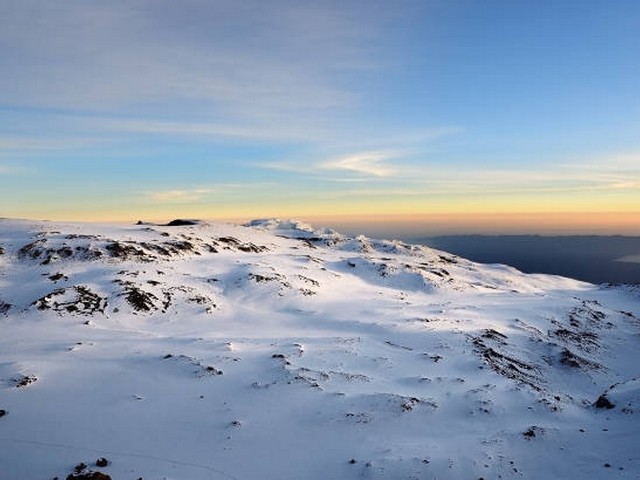How To Choose A Kilimanjaro Trekking Route: Your Guide to the Adventure of a Lifetime
Standing majestically as the highest peak in Africa, Mount Kilimanjaro beckons adventurers from every corner of the globe. Its iconic snow-capped summit is more than just a mountain; it’s a testament to personal endurance and the spirit of exploration. At Kilimanjaro Centre for Trekking and Ecotourism (KCTE), we understand that choosing the right path up this majestic mountain is paramount to the experience and success of your climb. In this detailed guide, we will walk you through the various trekking routes to help you select the perfect one that resonates with your adventure spirit and hiking preferences.
Understanding Mount Kilimanjaro and Its Routes
Before diving into the specifics of each trekking route, it’s essential to grasp what makes Kilimanjaro so unique. This towering stratovolcano is composed of three volcanic cones: Kibo, Mawenzi, and Shira. It’s not just the height that makes Kilimanjaro challenging; it’s also the varying ecosystems you traverse – from lush rainforests and alpine meadows to barren lunar landscapes near the summit.
Choosing the Right Kilimanjaro Trekking Route
Each route up Kilimanjaro offers a distinct experience in terms of scenery, difficulty, foot traffic, and acclimatization profiles. Here’s a breakdown to help you make an informed decision:
1. Marangu Route: The "Coca-Cola" Route
- Duration: 5-6 days
- Difficulty: Moderate
- Scenery: Good
The Marangu route is the only path offering hut accommodations, making it a favorable choice for those who prefer not to camp. It’s often considered the easiest route due to its gradual slopes, but this can be misleading as the quick ascent increases the difficulty of acclimatizing.
2. Machame Route: The "Whiskey" Route
- Duration: 6-7 days
- Difficulty: Challenging
- Scenery: Excellent
Known for its stunning vistas, the Machame route is more strenuous but offers better acclimatization opportunities due to its "climb high, sleep low" profile. This path is highly recommended for scenic views and a higher success rate.
3. Lemosho Route: The Scenic Trail
- Duration: 7-8 days
- Difficulty: Moderate to Challenging
- Scenery: Excellent
Starting from the lush rainforests of Lemosho, this route offers a very scenic and less-traveled path. It merges with the Machame route midway, maintaining excellent views and a solid acclimatization profile.
4. Rongai Route: The Remote Path
- Duration: 6-7 days
- Difficulty: Moderate
- Scenery: Good
The only route that approaches from the north, the Rongai route is less crowded and offers a more remote wilderness experience. It’s considered one of the easier routes, which makes it a great choice for beginners.
5. Northern Circuit: The Ultimate Journey
- Duration: 8-9 days
- Difficulty: Challenging
- Scenery: Exceptional
The longest route on Kilimanjaro, the Northern Circuit, circles the mountain and offers unparalleled views and solitude. This route provides the best acclimatization and a high success rate but requires more time and endurance.
6. Umbwe Route: The Steep Ascent
- Duration: 6-7 days
- Difficulty: Very Challenging
- Scenery: Good
The Umbwe route is the steepest and most direct approach to the summit. It is less crowded and offers a real challenge for experienced trekkers who are confident in their acclimatization.
Factors to Consider When Choosing Your Route
Personal Fitness and Experience
Evaluate your physical condition and hiking experience. Routes like Marangu and Rongai offer gentler slopes compared to the more demanding Machame or Umbwe routes.
Desired Scenery and Traffic
Consider whether you prefer a quieter experience with more nature or a popular, well-trodden path. Routes like Lemosho and Northern Circuit are perfect for nature lovers seeking solitude.
Duration and Budget
Longer routes increase your summit success rate due to better acclimatization but also mean a higher cost in terms of time and money. Balance these factors according to your preferences and budget.
Why Choose Kilimanjaro Centre for Trekking and Ecotourism (KCTE)?
At KCTE, we pride ourselves on creating personalized and memorable climbing experiences. Our expert guides, comprehensive safety measures, and commitment to environmental conservation make us the premier choice for your Kilimanjaro adventure.
FAQs About Climbing Kilimanjaro
What is the best time to climb Kilimanjaro?
The best times to climb Kilimanjaro are during the dry seasons: January to mid-March and June to October.
How fit do I need to be to climb Kilimanjaro?
You should be in good physical health, able to walk for several hours over consecutive days. Training for endurance and practicing hikes with elevation gain can be very beneficial.
What should I pack for my Kilimanjaro trek?
Essential items include thermal clothing, hiking boots, a sleeping bag rated for cold temperatures, a waterproof jacket, and sun protection. A detailed packing list will be provided when you book your climb with KCTE.
Can I climb Kilimanjaro without a guide?
No, Tanzanian law requires all climbers to be accompanied by a licensed guide. KCTE provides experienced guides to ensure your safety and enhance your climbing experience.
Embark on Your Trek with Confidence
Choosing the right Kilimanjaro trekking route can make all the difference in your climbing experience. At Kilimanjaro Centre for Trekking and Ecotourism, we are dedicated to helping you select the path that best suits your adventure desires and physical capabilities. Contact us today to plan your journey to the Roof of Africa, where breathtaking views and personal triumphs await. Let’s conquer Kilimanjaro together!
Your adventure begins here – climb with Kilimanjaro Centre for Trekking and Ecotourism (KCTE), where the summit is just the beginning of what you achieve.




